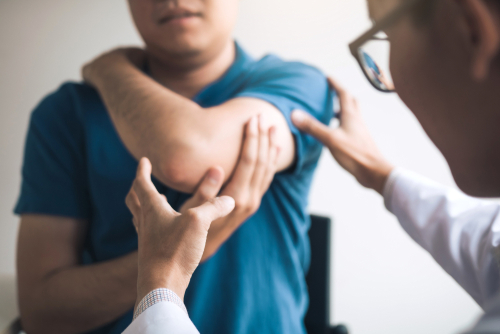The Role of Physical Therapy in Rotator Cuff Rehabilitation
September 18, 2023 3:11 pm Leave your thoughts
The rotator cuff is a group of muscles and tendons that surround the shoulder joint, providing stability and facilitating its movement. However, due to overuse or injury, the rotator cuff can become damaged, leading to pain, weakness, and limited range of motion. In such cases, physical therapy plays a crucial role in the rehabilitation process.
Understanding Rotator Cuff Injuries:
Before delving into the role of physical therapy, it’s important to understand the different types of rotator cuff injuries. The most common rotator cuff injuries include tendinitis, bursitis, and tears. Tendinitis occurs when the tendons become inflamed, while bursitis is an inflammation of the fluid-filled sacs that cushion the tendons. Tears are partial or complete disruptions of the tendon fibers, ranging from minor fraying to complete detachment.
The Role of Physical Therapy:
1. Diagnosis and Assessment:
The first step in any rehabilitation process is a thorough diagnosis and assessment of the injury. Physical therapists are trained to identify the specific rotator cuff injury and assess its severity. This involves analyzing range of motion, strength, and pain levels. Based on this assessment, a personalized treatment plan can be developed.
2. Pain Management:
Rotator cuff injuries can be excruciatingly painful, making it difficult for individuals to perform daily activities. Physical therapists use various techniques to manage pain, such as ice or heat therapy, electrical stimulation, massage, and ultrasound. Additionally, they may prescribe pain medication or use therapeutic exercises to promote blood flow and relieve pain.
3. Range of Motion Exercises:
One of the primary goals of physical therapy is to restore the range of motion in the shoulder joint. Physical therapists employ a variety of exercises and stretching techniques to increase flexibility and reduce tightness in the muscles and tendons surrounding the shoulder. These exercises help in gradually restoring the normal range of motion and reducing stiffness.
4. Strengthening Exercises:
Another crucial aspect of rotator cuff rehabilitation is strengthening the muscles around the shoulder. Physical therapists develop personalized exercise programs that target the specific weakened muscles and help rebuild strength. These exercises often involve the use of resistance bands, weights, or specialized equipment. Strengthening the muscles not only helps in healing the injury but also prevents future recurrences.
5. Posture Correction:
Poor posture can exacerbate existing rotator cuff injuries and cause additional strain on the shoulder joint. Physical therapists educate patients about proper body mechanics, alignment, and posture. They provide guidance on how to maintain good posture while performing daily activities, such as lifting or reaching. Correcting posture can alleviate stress on the rotator cuff and promote healing.
6. Manual Therapy:
Physical therapists may also employ hands-on techniques, known as manual therapy, to aid in the rehabilitation process. These techniques include soft tissue mobilization, joint mobilization, and myofascial release. Manual therapy helps to improve joint mobility, reduce pain and muscle tension, and enhance overall function. It is often used in conjunction with other treatment modalities for optimal results.
7. Return to Activities:
Once significant progress has been made in terms of pain reduction and increased range of motion and strength, physical therapists guide patients in gradually returning to their usual activities. Whether it be participating in sports, lifting weights, or engaging in household chores, therapists ensure that individuals are ready to undertake these activities without risking reinjury.
Conclusion:
Physical therapy plays a paramount role in the rehabilitation of rotator cuff injuries. Through diagnosis, pain management, range of motion and strengthening exercises, posture correction, manual therapy, and guided return to activities, physical therapists help patients regain optimal shoulder function. It is crucial to seek early intervention and work closely with a qualified physical therapist to ensure successful recovery from a rotator cuff injury.
Got Questions? Let Us Help!
Welcome to Bernard Ong, M.D.! With extensive experience and an expert in the industry, Dr. Bernard Ong is the premier orthopedic surgeon in Las Vegas, Nevada. Our services focus on providing the very best in patient care, including orthopedic surgery, sports medicine, arthroscopy, meniscus surgery, ACL surgery, knee replacement, and more. As a sole practitioner, you know you are getting the highest level of personalized care from Dr. Ong. Contact us today for more information or to schedule your appointment!
Categorized in: Rotator Cuff Injury
This post was written by admin
